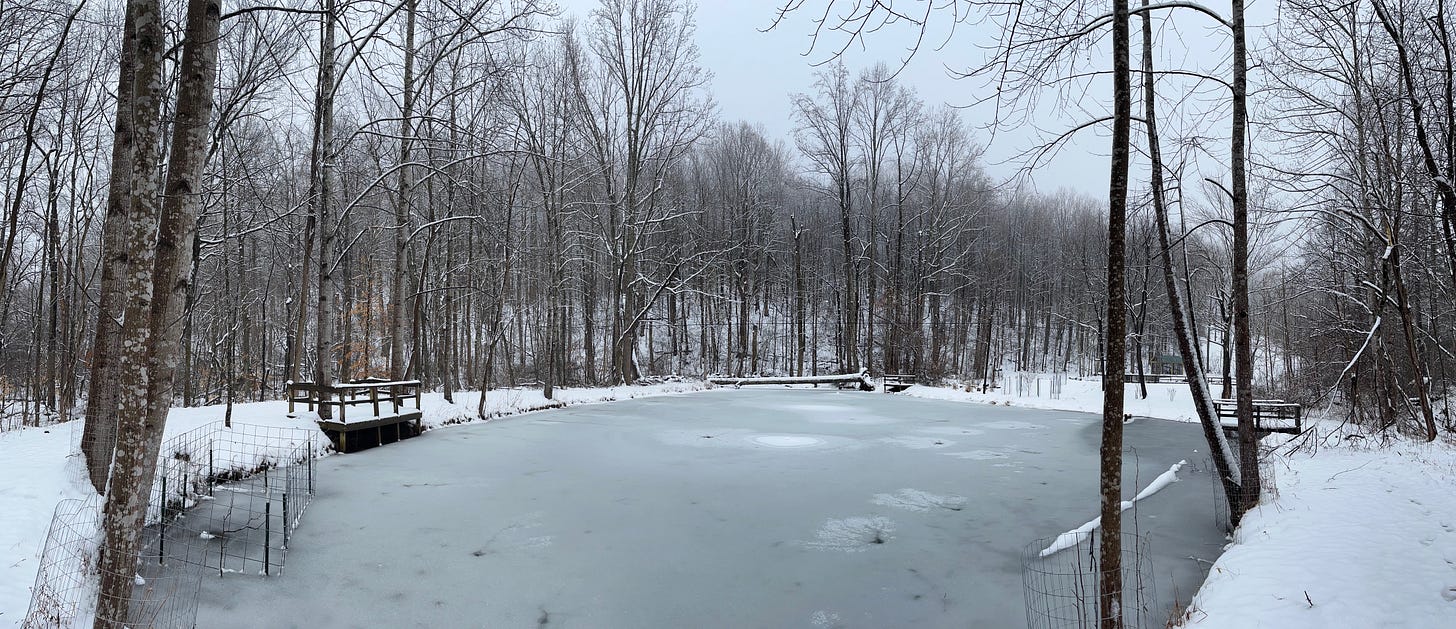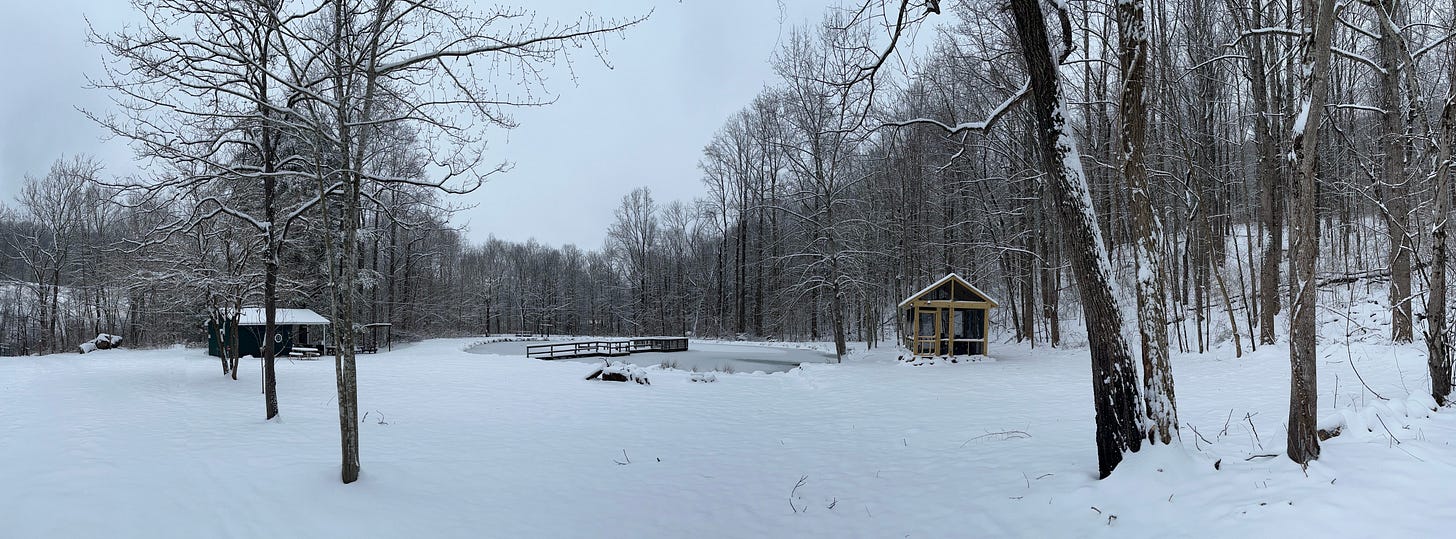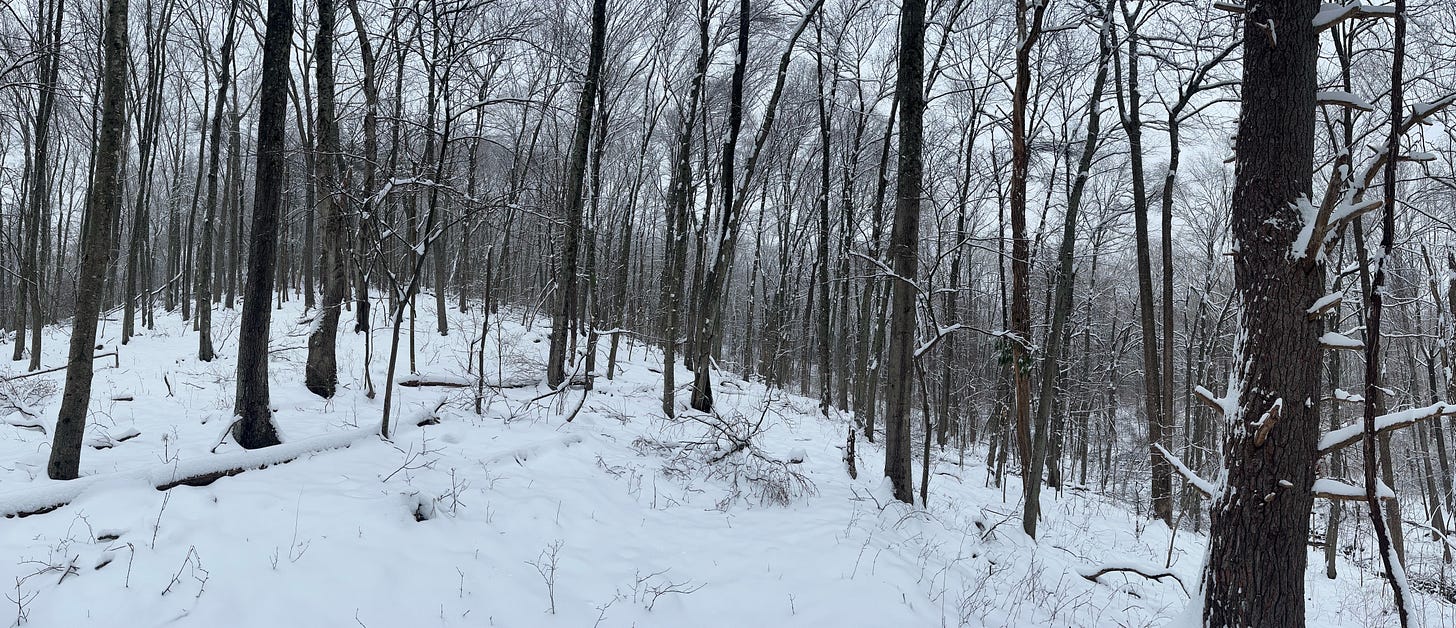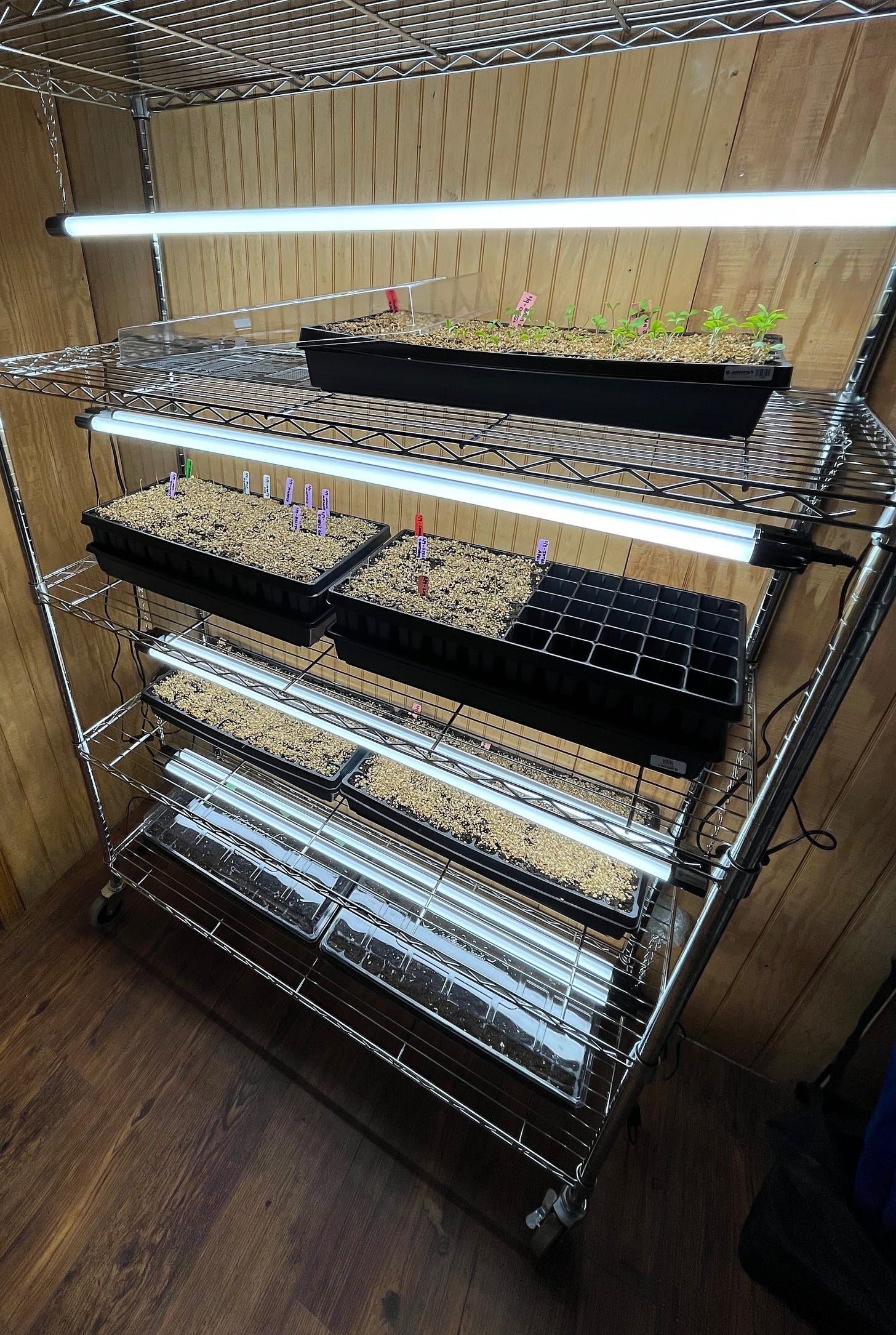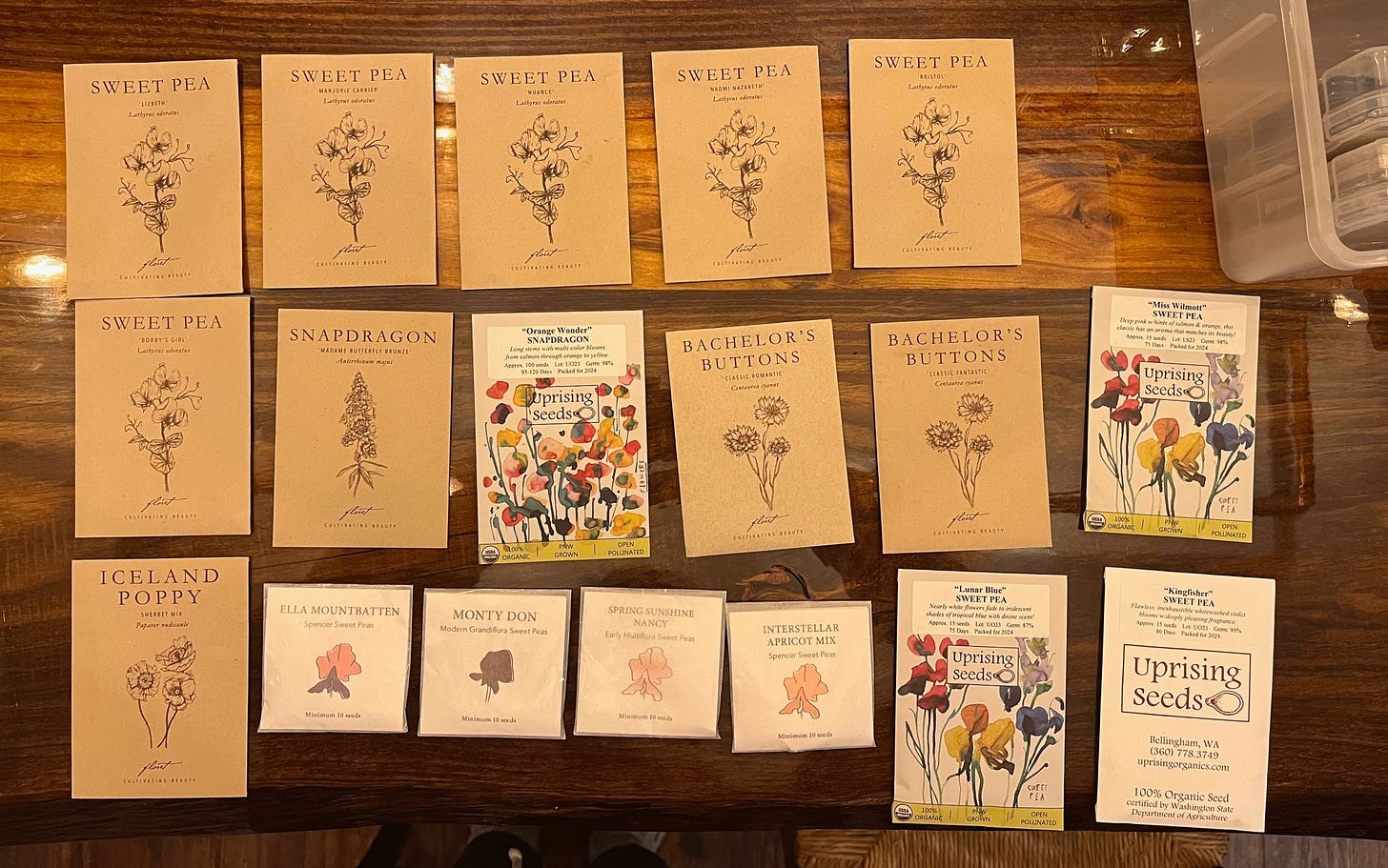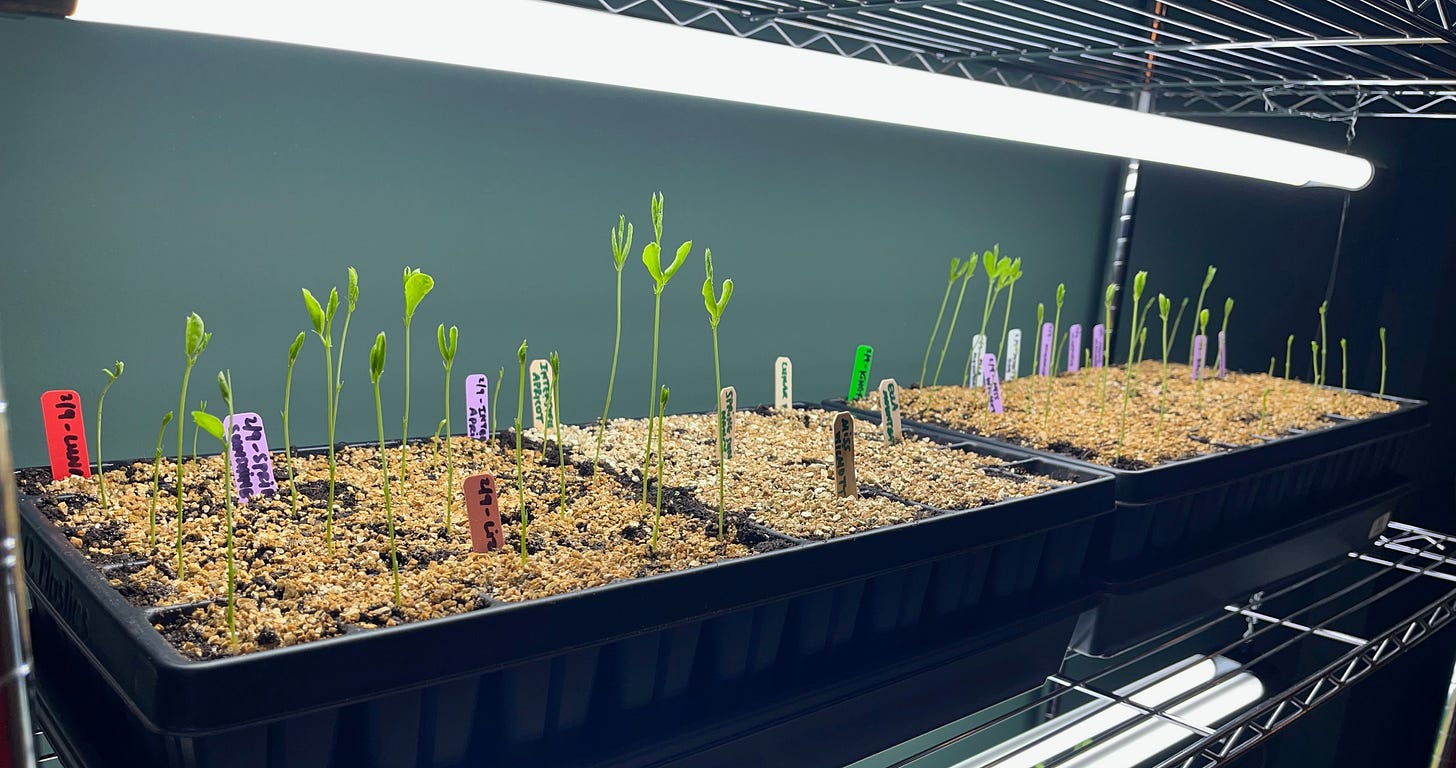Though I’ve spent the last twelve days largely by myself in the woods, I haven’t encountered the same loneliness so often flavoring this era of pandemic and disconnect. I follow routines cultivated over a decade of freelancing – running my weekly self-scheduling meeting, making phone calls while cooking dinner, constantly brewing tea – but I also dedicate more of my conscious attention to the art of survival – procuring food in advance of snowstorms, building fires to conserve propane, filling the bathtub in case I lose power and can’t pump water from the well. No longer submersed in the soundtrack of industry, I embrace the muted crackle of mid-winter in the hollow, crunching through snow and frozen mud alongside proof of the community I now inhabit – rabbit, bobcat, otter, fox, all of us adjusting to harsher conditions, our overlapping tracks expressions of autonomy and interdependence.
Perhaps these more-than-human neighbors share my gratitude in having a sloped refuge from westerly winds, storms blustering across the jet stream in rapid succession, an atmosphere unsettled from coast to coast.
Perhaps they share my dismay at the mass firings of federal workers – in particular the scientists, rangers and conservation experts weaving the web to keep us safe nestled next to a national park, in a town with an economy powered by hikers who will soon find deteriorating conditions and unreliable access to our common lands.
Perhaps they share my devotion via daily walks following water through the landscape, unclogging pipes in ponds we didn’t build, mountain springs interrupted by prior generations’ ingenuity – the repair inherited from those whose steps we trace.
Perhaps these more-than-human neighbors share my dreams for a greener future as flurries still fall, the promise of spring while I sow seeds indoors, our foundation for a garden that will flourish in months to come, surrounded by a fence to keep them out.
When I started my inaugural “seedling program” last February in Southern California’s frost-free Zone 10B, I grew my young plants outdoors atop a picnic table at the end of the driveway, wielding pop-up netting to protect from birds and squirrels; this February, in Northern Virginia’s Zone 7A, it’s 22°F with snow on the ground, which calls for a… slightly different approach.
Following instructions from various Floret workshops I’ve taken (there’s a free seed-starting course running now, which I highly recommend), I’ll be germinating all my crops inside using heat mats and grow-lights on metal shelves atop caster wheels. Since we’re saving the greenhouse for phase two of our market garden, I’ll be running this program from the basement over the next three months, gradually hardening off plants on the porch once temperatures consistently rise above freezing, and then transplanting starting in late March/early April.
To help keep track of everything, I’ve created a “Seed-Sowing Schedule” where I record the names and numbers of plants I’ll be sowing each week, as well as noting when they germinate and observations from the growing season. This organizing system is crucial for understanding down-flow impacts when working with thousands of individual plants; it can also help you order more accurate amounts of supplies when your design plan is still evolving (and yes, I’ve already made some math errors, but they were… less wrong than they would have been otherwise).
I’m also diving into the exciting world of seed-starting microclimates with the help of an infrared digital thermometer. Like humans, not all seeds are exactly the same, and each needs slightly different conditions to thrive. Some should be scattered on the surface, some buried in the soil; some like it on the cooler side, some on the warmer; some take three days to germinate, some three weeks.
By targeting different spots in the basement, I’m able to offer a range of options:
in the closet with the furnace/water heater, which is consistently around 70-75°F, I germinate seeds using a humidity dome beneath grow-lights, then nurse any plants that prefer slightly warmer conditions to get going;
in the main room, consistently around 60-65°F, I germinate using a heat mat and humidity dome, then transition to grow-lights for nursing any plants that prefer slightly cooler conditions;
in the laundry room, consistently around 50°F, I can store my dahlia tubers without fear of them rotting from freeze or awakening from dormancy.
Two weeks in, the program is working to great success, including the germination of seeds I collected from the pineapple sage (Salvia elegans) in my herb spiral before we transplanted it to a friend’s backyard. Life begets life, patience begets beauty.
Should we lose power in storms to come, I’ll build a fire in the wood stove and bring my tender plants upstairs for the warmth of collaboration, imagining how we might increase our resiliency amidst more frequent bouts of extreme weather, all while our executive branch turns its back on federal emergency relief, climate-smart agriculture and science-based stewardship.
In the shadow of division, obligations unmet, I dream of a coalition that uplifts farmers, gardeners and land managers across America, investing in economies that support the meaningful work of caring for the earth. I dream of neighborhood farms that function as both a green jobs program and community food bank, of parks tended by public gardeners working to heal our common lands, of government subsidies that reward land-owners for improving the health of their ecosystems. I dream of an alternative to this careless cruelty, of an antidote to wanton disregard, of no longer sacrificing collective bonds on the altars of individualism and efficiency.
May we continue sowing hope amidst seeds of destruction.




